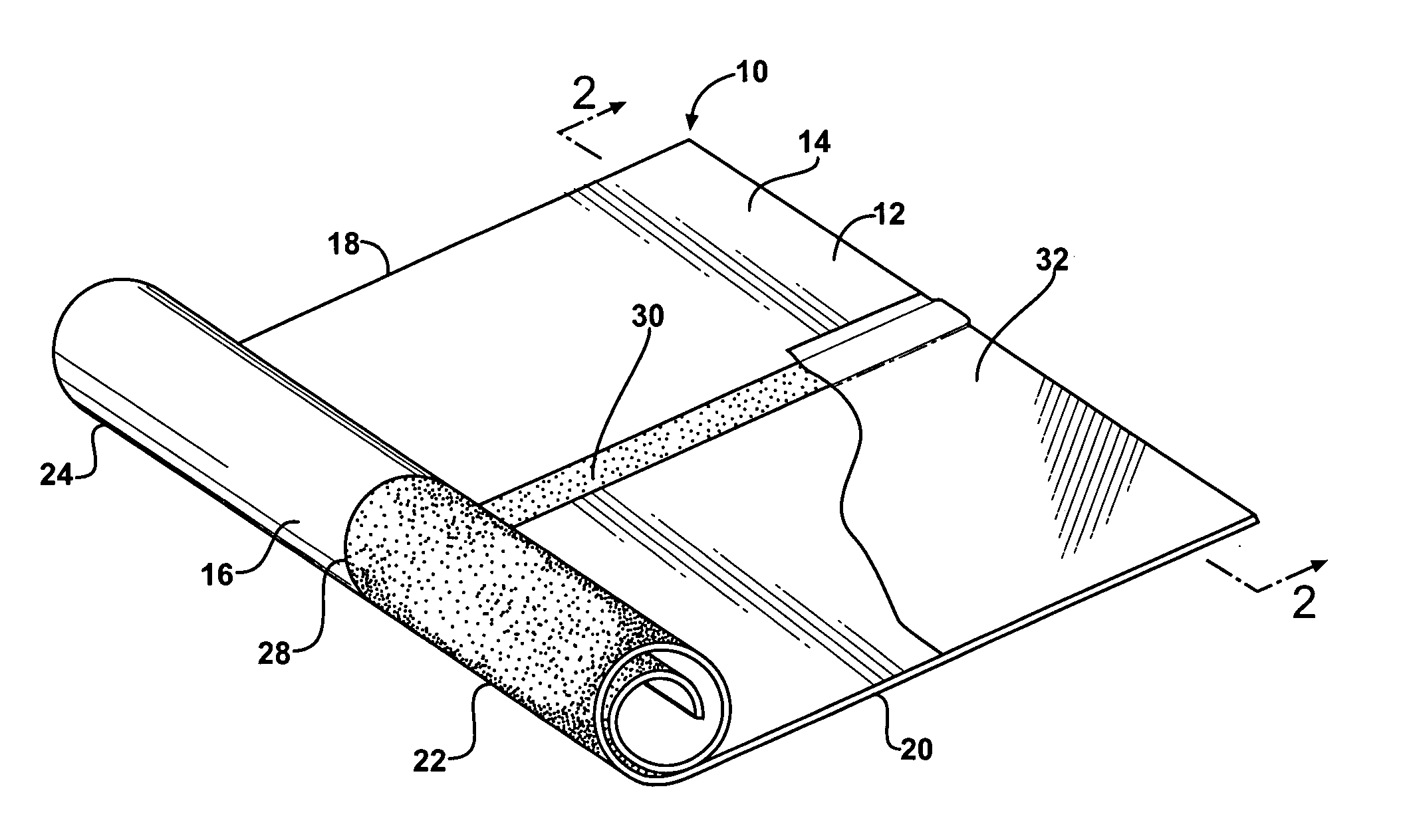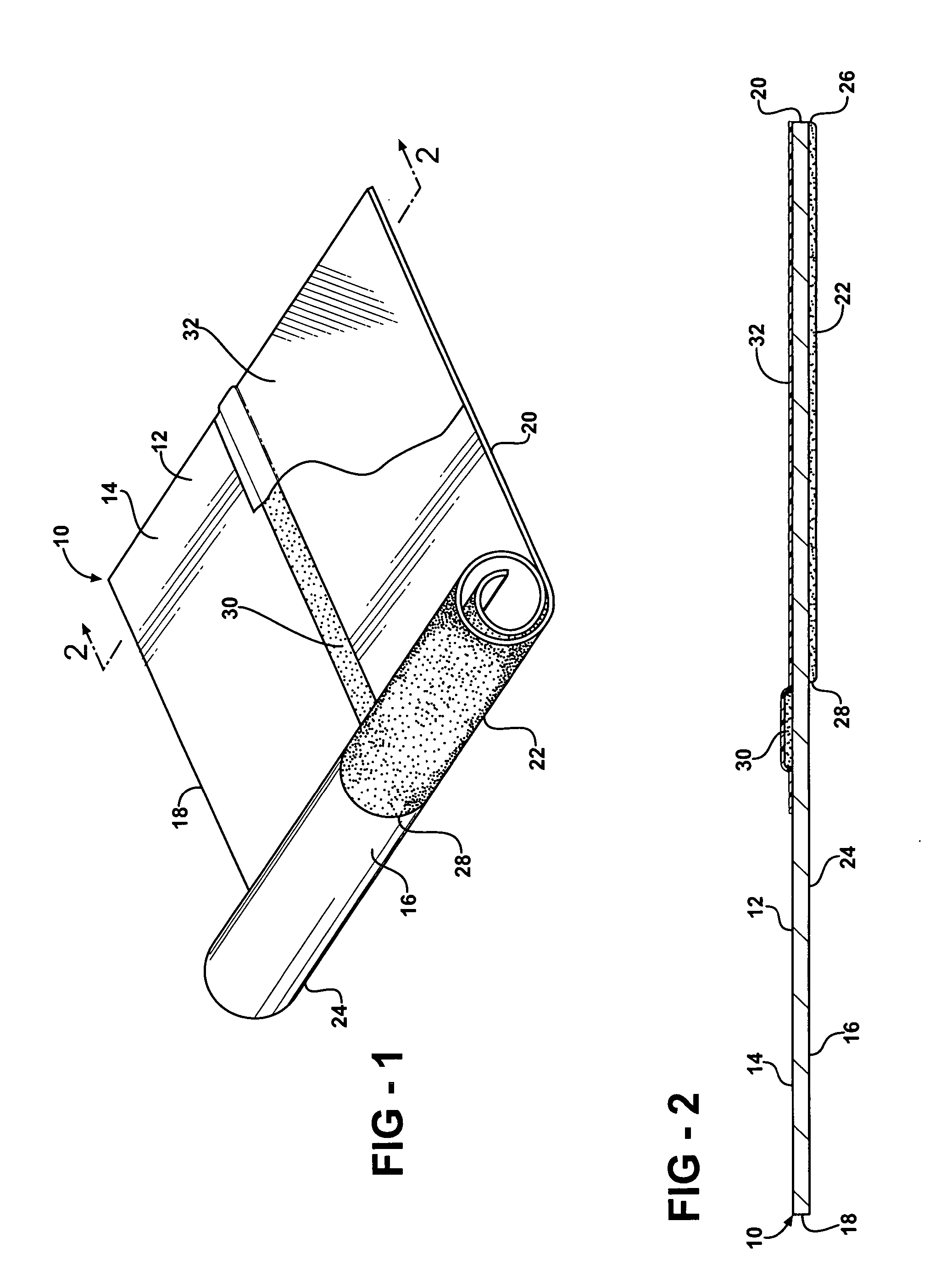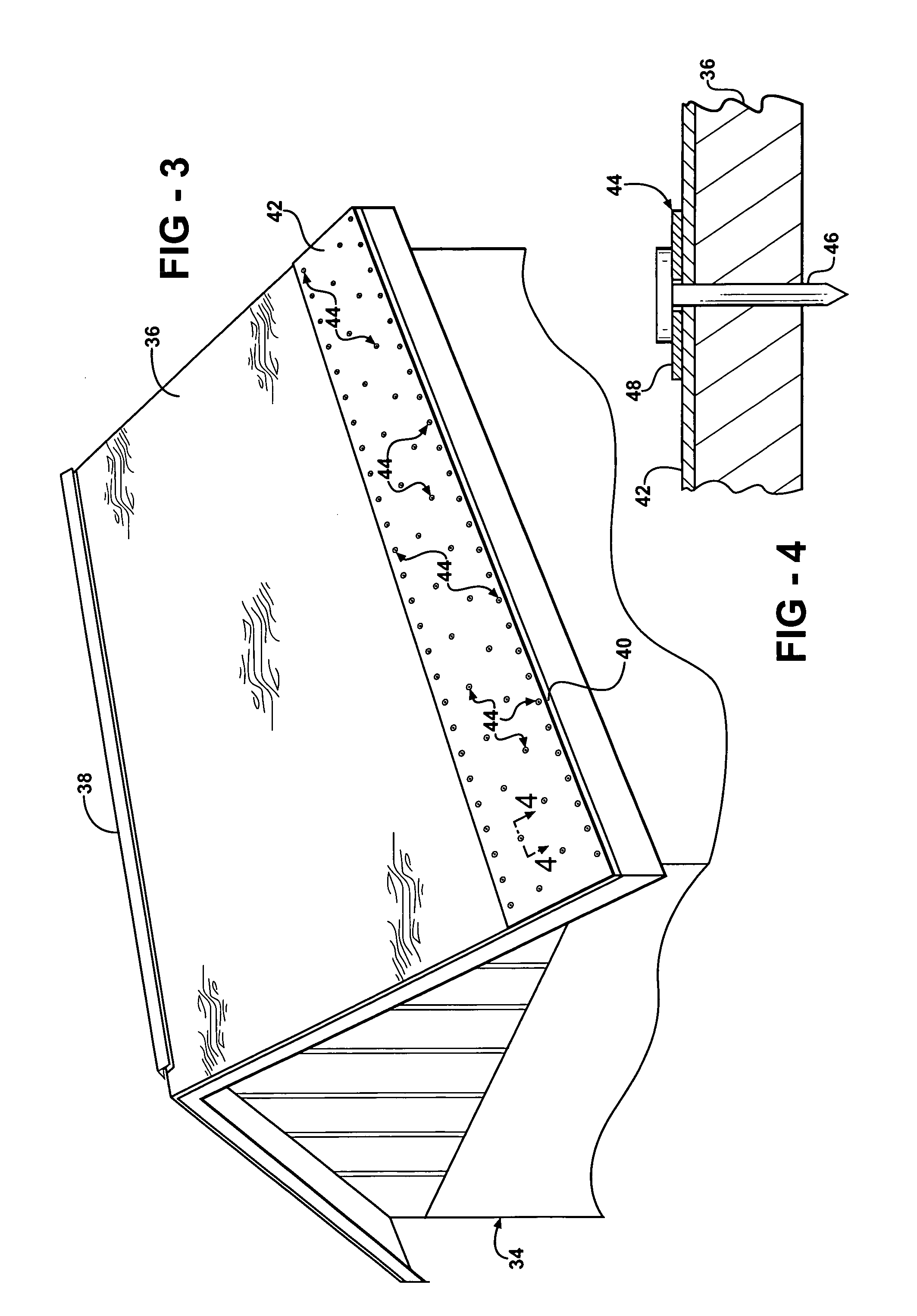Roof underlayment
a technology for roofs and underlayments, applied in the field of underlayment sheets, can solve the problems of affecting the work efficiency of roof workers, affecting the service life of roof workers, and affecting the efficiency of air conditioning systems, so as to achieve less manpower, less damage to plywood or osb decking, and less cost.
- Summary
- Abstract
- Description
- Claims
- Application Information
AI Technical Summary
Benefits of technology
Problems solved by technology
Method used
Image
Examples
Embodiment Construction
[0024] Referring to the Figures, wherein like numerals indicate like or corresponding parts throughout the several views, an underlayment sheet according to the subject invention is generally shown at 10 in FIGS. 1, 2, 6 and 7. The underlayment sheet 10 is of the type to be laid down on a bare roof deck before shingles or other roof coverings are installed to provide additional protection for the deck. The underlayment sheet 10 is generally formed as an elongated, strip-like product which is sold in rolls as suggested by the curled edge in FIG. 1. The underlayment sheet 10 is unrolled over a roof deck and applied in overlapping courses to establish a weather-resistant membrane below a visible roof covering which may be of any type including shingles, sheet metal, clay or cement tiles, or the like. It will be appreciated, however, that some applications such as low slope carports and the like may suffice to use the subject underlayment sheet 10 as a final covering. That is, in some i...
PUM
 Login to View More
Login to View More Abstract
Description
Claims
Application Information
 Login to View More
Login to View More - R&D
- Intellectual Property
- Life Sciences
- Materials
- Tech Scout
- Unparalleled Data Quality
- Higher Quality Content
- 60% Fewer Hallucinations
Browse by: Latest US Patents, China's latest patents, Technical Efficacy Thesaurus, Application Domain, Technology Topic, Popular Technical Reports.
© 2025 PatSnap. All rights reserved.Legal|Privacy policy|Modern Slavery Act Transparency Statement|Sitemap|About US| Contact US: help@patsnap.com



